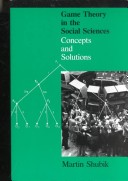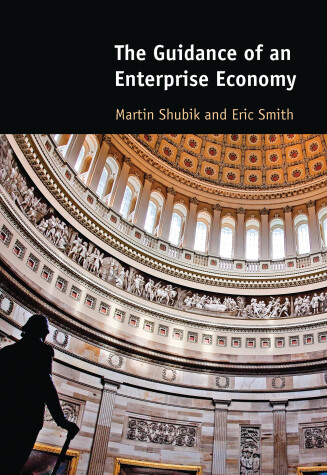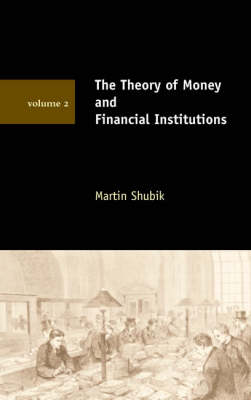The MIT Press
3 total works
Winner of the 1983 Lanchester Prize of the Operations Research Society of AmericaThis book by a recognized authority on game theory and its applications introduces social scientists in a variety of disciplines to this powerful methodology. The emphasis throughout is on the empirical approach to model building and testing within the context of real-world situations.
The second volume of Game Theory in the Social Sciences, A Game Theoretic Approach to Political Economy was published by The MIT Press in 1984.
This book offers a rigorous study of control, guidance, and coordination problems of an enterprise economy, with attention to the roles of money and financial institutions. The approach is distinctive in drawing on game theory, methods of physics and experimental gaming, and, more generally, a broader evolutionary perspective from the biological and behavioral sciences. The proposed theory unites Walrasian general equilibrium with macroeconomic dynamics and Schumpeterian innovation utilizing strategic market games. Problems concerning the meaning of rational economic behavior and the concept of solution are noted.
The authors argue that process models of the economy can be built that are consistent with the general equilibrium system but become progressively more complex as new functions are added. Explicit embedding of the economy within the framework of government and society provides a natural, both formal and informal, control system.
The authors describe how to build and analyze multistate models with simple assumptions about behavior, and develop a general modeling methodology for the construction of models as playable games.
This is the second volume in a three-volume exposition of Martin Shubik's vision of "mathematical institutional economics" -- a term he coined in 1959 to describe the theoretical underpinnings needed for the construction of an economic dynamics. The goal is to develop a process-oriented theory of money and financial institutions that reconciles micro- and macroeconomics, using as a prime tool the theory of games in strategic and extensive form. The approach involves a search for minimal financial institutions that appear as a logical, technological, and institutional necessity, as part of the "rules of the game." Money and financial institutions are assumed to be the basic elements of the network that transmits the sociopolitical imperatives to the economy.
Volume 1 deals with a one-period approach to economic exchange with money, debt, and bankruptcy. Volume 2 explores the new economic features that arise when we consider multi-period finite and infinite horizon economies. Volume 3 will consider the specific role of financial institutions and government, and formulate the economic financial control problem linking micro- and macroeconomics.


